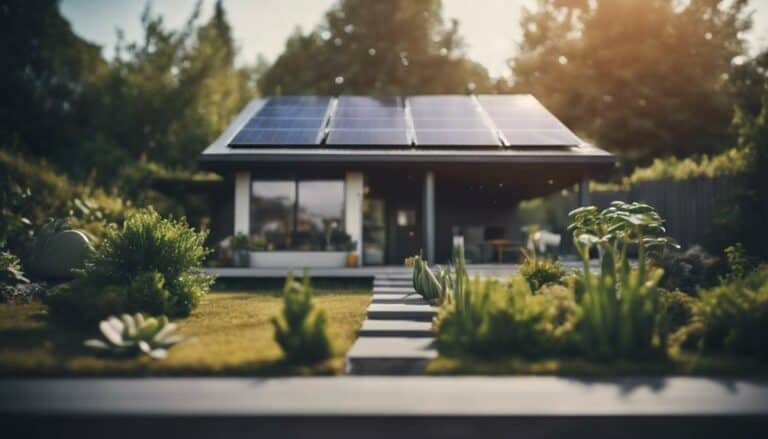Navigating the labyrinth of eco-friendly living, the thermostat stands as your guide, steering you through the twists and turns of energy savings and comfort.
If you're keen on slashing your energy bills without sacrificing your cozy or cool haven, mastering these 5 essential thermostat tips is your first step.
From setting the perfect temperature to embracing the wonders of smart technology, these strategies promise not only to lighten your environmental footprint but also to pad your wallet.
Curiosity piqued? Let's explore how simple adjustments can lead to significant impacts, ensuring your home remains a beacon of sustainability and comfort.
Key Takeaways
- Set your thermostat to 78°F in summer and 68°F in winter for optimal eco-efficiency.
- Use smart thermostats for up to 10% savings on heating and cooling costs.
- Adjust temperatures by 7-10 degrees seasonally to enhance energy efficiency.
- Monitor and analyze energy usage to optimize heating and cooling settings.
Optimal Temperature Settings
Adjusting your thermostat to eco-friendly temperatures, like 78°F in summer and 68°F in winter, can greatly reduce your energy consumption. Setting your thermostat within these recommended ranges not only promotes energy savings but also guarantees your home remains comfortable.
For best sleep, maintaining a bedroom temperature around 65°F enhances both comfort and efficiency. Additionally, adjusting settings for when you're away, such as 55-60°F in winter and 85-88°F in summer, maximizes eco-friendliness and energy conservation.
Embracing these settings can lead to savings of up to 10% on your energy bills. It's about finding that balance between heating, cooling, comfort, and efficiency, ensuring your home's thermostat settings are both eco-friendly and conducive to your lifestyle.
Programming Your Thermostat
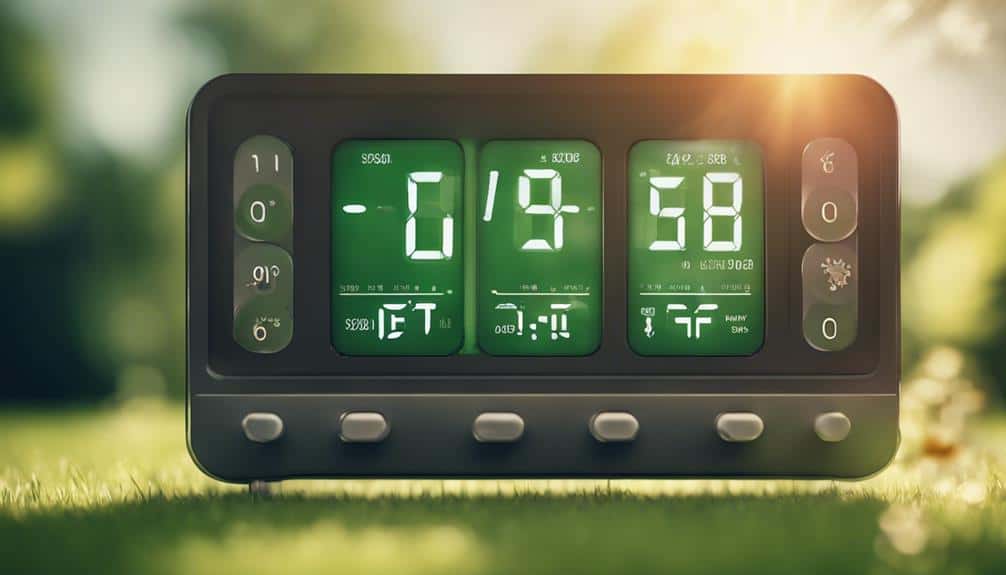
After exploring perfect temperature settings, it's time to focus on how programming your thermostat can further enhance your home's energy efficiency. By setting a weekly schedule, you can save up to 10% on annual energy bills. Smart thermostats take this a step further, offering personalized comfort settings based on your routine, ensuring energy savings without sacrificing comfort.
Utilizing setback temperatures when you're away or asleep can lead to significant reductions in home heating and cooling costs. Additionally, optimizing temperature thresholds for each season promotes an eco-friendly approach to managing your home's climate.
Embracing Smart Thermostats
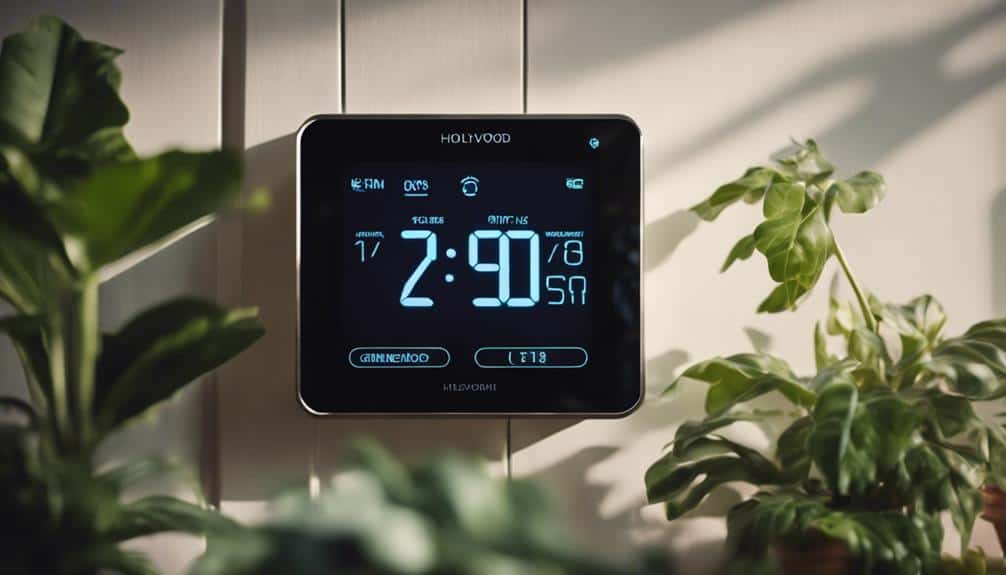
Embracing smart thermostats can greatly boost your home's energy efficiency, saving you up to 10% on heating and cooling costs. These devices not only save money but also offer remote access and personalized comfort, tailoring heating and cooling patterns to your lifestyle. By integrating with smart home systems, you'll enjoy enhanced control and energy-saving schedules.
| Feature | Benefit |
|---|---|
| Remote Access | Control temperature from anywhere. |
| Personalized Comfort | Adjust settings for best energy use. |
| Energy Star-certified | Lower greenhouse gas emissions, save energy. |
Opting for an Energy Star-certified smart thermostat means you're choosing a path towards sustainability, reducing greenhouse gas emissions. You'll notice lower energy expenses by efficiently managing your home's heating and cooling patterns, stepping into a smarter, greener living space.
Monitoring Energy Usage
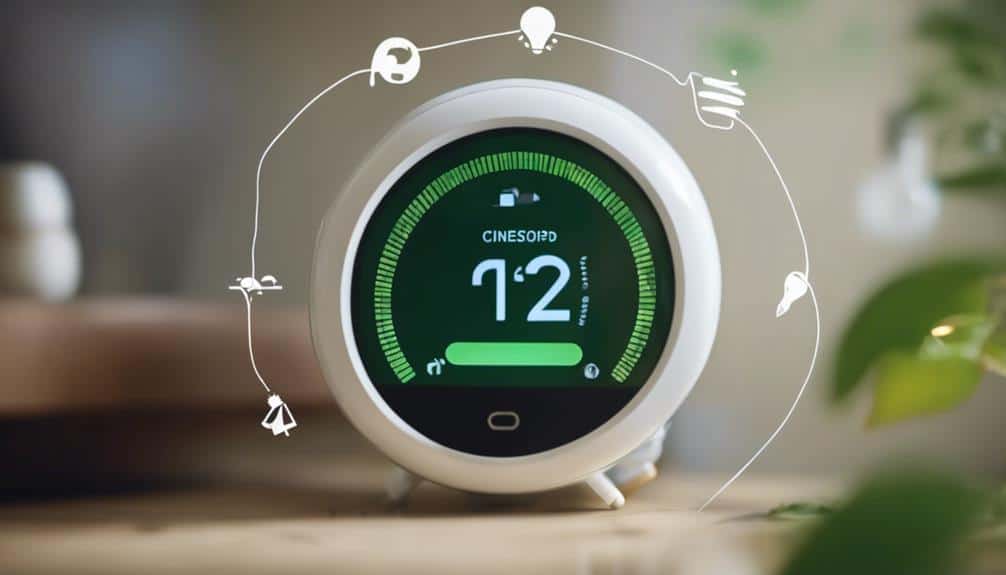
Building on the foundation of using smart thermostats, monitoring your energy usage is the next step in enhancing your home's environmental friendliness. By tracking energy usage, you'll pinpoint where to cut back on unnecessary energy consumption. Energy data analysis offers insights into how you can adjust for more efficient heating and cooling.
This understanding enables you to optimize thermostat settings, aligning them with your actual needs rather than guesswork. Real-time energy monitoring keeps you accountable, nudging you towards more eco-friendly practices daily. Utilizing energy monitoring tools not only identifies areas ripe for energy efficiency improvement but also keeps your efforts on track.
Embrace these strategies to make a tangible difference in your home's energy footprint.
Seasonal Adjustment Strategies
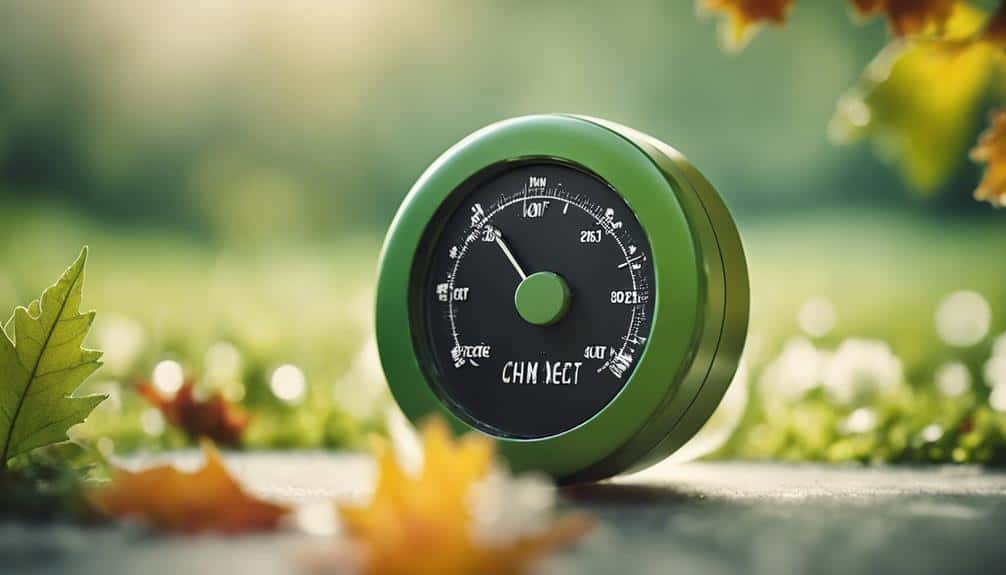
To save up to 10% on heating and cooling costs, consider adjusting your thermostat settings by 7-10 degrees during different seasons. This simple strategy can greatly reduce your energy consumption.
- Utilize natural ventilation and ceiling fans in summer: This reduces the reliance on air conditioning, offering energy savings and maintaining comfort.
- Set unoccupied temperatures wisely: In winter, aim for 55-60°F, and in summer, 85-88°F. These adjustments conserve energy without compromising the integrity of your home.
- Maintain a bedroom temperature of 60-67°F: This promotes both energy efficiency and comfortable sleep, ensuring you wake up refreshed without overspending on energy.
Implementing these seasonal adjustments to your thermostat settings not only enhances your home's energy efficiency but also supports a more eco-friendly lifestyle.
Frequently Asked Questions
What Is the Most Energy Efficient Way to Use a Thermostat?
To use your thermostat most efficiently, adopt programmable settings, adjust for seasons, and use night settings. Consider zoning systems, smart integrations, and temperature setbacks. Regular energy audits and behavioral adjustments during peak hours enhance savings.
What Is a Sustainable Thermostat Temperature?
A sustainable thermostat temperature involves seasonal adjustments, temperature setbacks, and nighttime settings. Consider humidity, use zonal controls, smart programming, wear layers, enhance insulation, apply window solutions, and prevent drafts for efficiency and comfort.
How Are Thermostats Eco Friendly?
Thermostats are eco-friendly as they offer smart integration, zone control, and compatibility with renewables. They track usage, provide energy reports, reduce your carbon footprint through adaptive learning, and allow remote adjustments for optimum efficiency and maintenance alerts.
Is It Cheaper to Leave Your Thermostat at One Temperature?
It's not cheaper to keep your thermostat at one temperature. Fluctuating it for comfort and schedule, like zone heating and seasonal adjustments, increases HVAC efficiency. Programmable benefits debunk temperature and energy myths, saving you money.
Conclusion
By setting your thermostat to ideal temperatures, you're not just saving money; you're also fighting climate change.
Embrace smart thermostats for greater control and efficiency.
Regularly monitor your energy usage to identify opportunities for improvement.
Remember, adjusting settings seasonally maximizes savings and comfort.
Ultimately, these simple steps not only benefit your wallet but also contribute to a healthier planet.
Start making these changes today and enjoy the dual rewards of financial savings and environmental sustainability.

